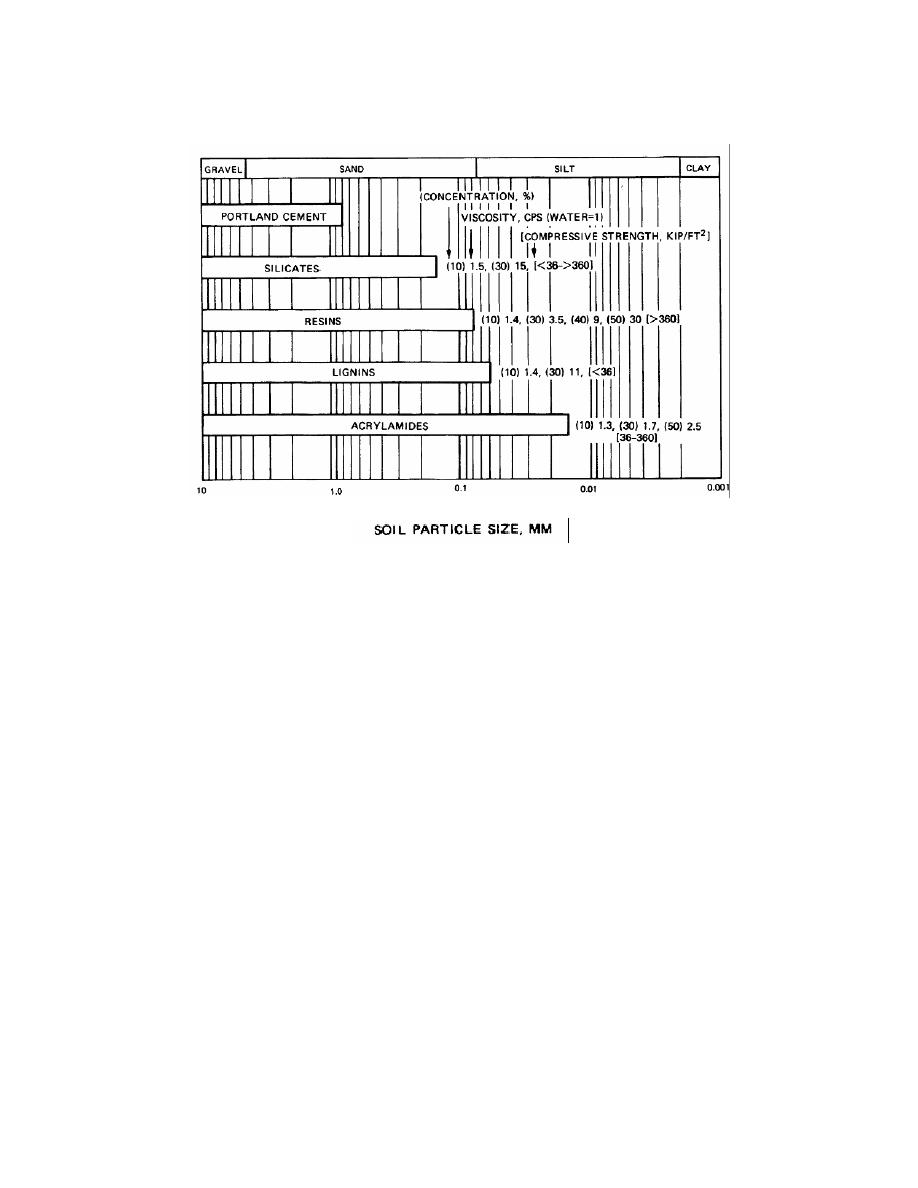
UFC 3-220-01N
15 AUGUST 2005
Figure 8-7.6 Soil Particle Sizes Suitable for Different Grout Types and Several
Concentrations and Viscosities Shown
8-7.6
Reinforcement. The supporting capacity of soft, compressible ground
may be increased and settlement reduced through use of compression reinforcement in
the direction parallel to the applied stress or tensile reinforcement in planes normal to
the direction of applied stress. Commonly used compression reinforcement elements
include mix-in-place piles and walls. Strips and membranes are used for tensile
reinforcement, with the latter sometimes used to form a moisture barrier as well.
8-7.6.1
Mix-in-Place Piles and Walls. Several procedures are available, most of
them patented or proprietary, which enable construction of soil-cement or soil-lime in
situ. A special hollow rod with rotating vanes is augered into the ground to the desired
depth. Simultaneously, the stabilizing admixture is introduced. The result is a pile of up
to 0.6 meters (2 feet) in diameter. Cement, in amounts of 5 to 10 percent of the dry soil
weight, is best for use in sandy soils. Compressive strengths in excess of 9.6 mPa (200
kips) per sq ft can be obtained in these materials. Lime is effective in both expansive
plastic clays and in saturated soft clay. Compressive strengths of about 0.96 1.92
kPa (20 to 40 kips) per square foot are to be expected in these materials. If overlapping
piles are formed, a mix-in-place wall results.
8-7.6.2
Vibroreplacement Stone Columns. A vibroflot is used to make a
cylindrical, vertical hole under its own weight by jetting to the desired depth. Then, up to
( to 1 in) diameter is dumped in, and the vibroflot is used to compact the gravel
vertically and radially into the surrounding soft soil. This process of backfilling and
compaction by vibration is continued until the densified stone column reaches the
surface.
8-101



 Previous Page
Previous Page
